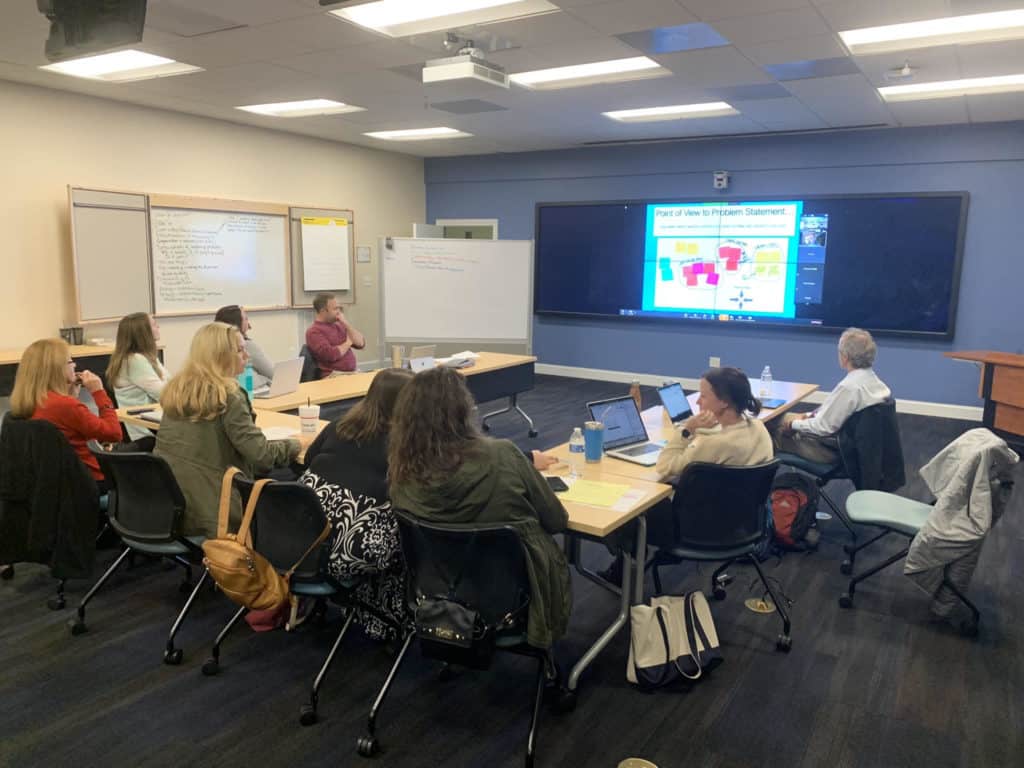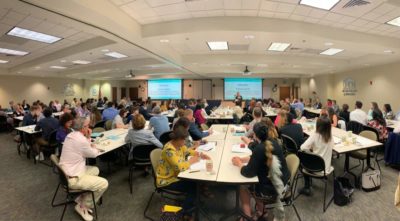
Innovation in the form of new ideas, new products, and new services is a prominent feature of our society today. However, while school improvement is a top priority in education, innovation is often not part of the conversation.
In April of 2017, we described this situation and proposed changes in the article “Another way to improve schools – create a culture of innovation.” In short, North Carolina has pursued high-stakes testing and accountability as the sole approach for school improvement, ignoring the option of improvement through innovation.
While most businesses view innovation as essential to their success, it is concerning and shortsighted that in the field of education, which is based on human development and intelligence, new approaches to learning and to schools are not valued. In this piece, we describe our work at the Watson College of Education at UNC-Wilmington in supporting innovation. We outline changes needed to support innovation, conceptualize innovation, and describe the creation of the Educational Innovation Network NC.
As we know from the field of innovation, and even from teacher development via professional learning communities, collaboration is a powerful way to promote learning and create new ideas. School and district collaboration enable the pooling of resources and ideas to tackle common problems and goals.
However, school improvement in North Carolina has been based on a competitive model in which schools and districts compete with rewards and punishments provided around predefined and standardized (or one-size-fits-all) goals. Apart from a few examples of school and district collaboration such as TIPNC.org and Schools that Lead, the benefits of large-scale systematic collaboration have been largely overlooked.
Further, North Carolina’s model for school improvement offers little incentive for teachers and schools to think creatively about teaching and learning. In fact, the model acts as a disincentive for teachers and schools to try new approaches for fear that change might adversely affect a school’s scores and grade.
North Carolina needs to support the development of innovative approaches to teaching and learning, including collaborative approaches to school improvement.

Conceptualizing innovation in education
In certain contexts, innovation in education has been variously seen as synonymous with charter schools, technology, personalized learning and STEM. Last May, we described some of the ways that innovation is conceptualized in North Carolina. When we began this work in the Watson College of Education, we started with a broad understanding of innovation, similar to the view offered by Sir Ken Robinson in his book Creative Schools: The Grassroots Revolution That’s Changing Schools: “Innovation is putting new ideas into practice.” We surveyed teachers to learn whether they saw themselves as involved in innovative programs and practices and, if so, what they defined as being innovative. We included questions on the supports and barriers to innovation at the school, district and state level. You can view a summary of the findings here.
Many educators and organizations offer good insights in helping define innovation. The Innovative Schools Network has a useful framework for innovation identifying the following seven areas: pedagogy, curriculum, assessment, governance, school design, school scheduling, and relationships. For each area, the website provides specific examples of innovative practices. George Couros and Tony Wagner describe the personal characteristics of innovators including risk takers, creators, empathetic, networked, and collaborators.
We have also personally met many examples of inspiring and courageous educators implementing innovative programs in their classrooms and schools (see a list of them here). Unfortunately, such changes are often the result of individual initiative rather than part of a larger plan at the state- and/or district-level to support innovation.
Our conceptualization of educational innovation has certainly evolved. In our view, innovation includes changes for both students and teachers. We support creating engaging learning experiences in which students have greater control over their learning and in empowering them to be included in real decisions about the work of schools.
While student learning is often the main priority, we also recognize that, as Katie Martin states, “if we want to change how students learn we must change how teachers learn.” In relation to teachers, we support the broad view of teachers’ professional voice represented in the Teacher Leadership Competencies of the National Board for Professional Teacher Standards, the Center for Teaching Excellence, and other educational organizations. These competencies conceptualize teacher leadership in three areas: instructional leadership, association leadership, and policy leadership.
Finally, innovation must be viewed from an equity perspective. Support for innovation should not exacerbate existing opportunity gaps and, wherever possible, should help close such gaps for historically marginalized student populations and communities. This article from May describes the moral importance of viewing innovation as a process which should be in service of equity.

Educational Innovation Network NC
The goals for both Making Innovation a Priority in NC Schools conferences at Watson College (held in April 2018 and May 2019) were to highlight innovative programs and practices across the state, bring together educators engaged in innovation, and build support among education leaders, the business community, and policy makers for the importance of innovation to improving teaching and learning. One of the challenges in organizing the first conference was to locate innovative teachers and schools since innovation currently occurs in isolated pockets across the state.
Participants from the second conference wanted to be able to continue supporting innovation in education, and thus we created the Educational Innovation Network NC. The network, which has 50 members, has the following mission:
“To create an educational culture that furthers innovation by identifying innovative practices and sharing these across classrooms, schools, and districts, by empowering and supporting teachers as professionals, and by working with policy makers to achieve these goals.”
Where are we with innovation in NC?
Although innovation is still largely driven by individual educator initiatives, there are examples of broader statewide changes. In 2018, the North Carolina Department of Public Instruction created a deputy superintendent of innovation. The General Assembly has supported a number of initiatives in the name of innovation, including charter schools, a renewal district, the Innovative School District, lab schools, and advanced teaching roles. There are several organizations such as the Friday Institute, BEST NC, RTI, and Public Schools First NC, as well as networks, groups and individuals that are committed to driving innovation in PK-12 schools.

Next steps
The Educational Innovation Network is currently collaborating and planning a convening for groups, educators and policymakers who are committed to driving innovation in PK-12 schools. This convening would help to assess the current status of innovation in North Carolina with the goal of developing policy recommendations for how to prioritize innovation for school improvement. If you are interested in collaborating on such an effort, please contact us at InnovateNCed@gmail.com.
Editor’s note: This piece is part of a week-long series on innovation. Click here to see all of our content on this subject.





